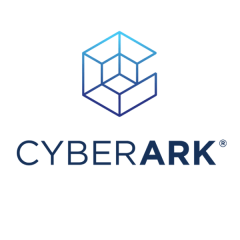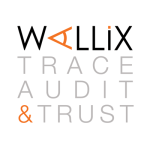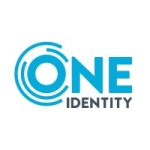What is our primary use case?
We use the solution as a vault for whatever passwords we use for connecting to an API or job services. The admin passwords we store in Password Vault. Via CyberArk, we have made a use case where we can track the session, keep a record, and log it, to whoever is logging into the servers.
How has it helped my organization?
CyberArk is basically used for privilege access management. It used to be hard to control security from internal employees. For products, and production servers, tracking used to be very difficult.
Although One Identity Manager also provides similar services that CyberArk provides, they are no match to CyberArk basically. The amount of details and logging that CyberArk provides is command level. That really streamlines the process of tracking those internal servers. That's one significant advantage, I would say.
What is most valuable?
CyberArk's best aspect is it lets you store the password, and it allows you to connect to those connected systems' passwords. For example, there is an AD in your organization, and you have stored the AD password. Say you want to change the AD password; you just have to change it in CyberArk. CyberArk itself will change the password in the connected system. That's one nice feature they have introduced in the latest features.
What needs improvement?
CyberArk is not friendly in terms of having a Community Edition. It's enterprise software. They could maybe give a Community Edition that you can just play around with and see how the software is. It's a very, very costly app.
Therefore, they can definitely give a demo version or some sort of a Community Edition with partial features at least to help potential users understand its capabilities.
The initial setup can get complex.
For how long have I used the solution?
I've used the solution for about four and a half years.
What do I think about the stability of the solution?
In terms of stability, there are no complaints. CyberArk, I would say, is an industry leader in this portfolio, especially in Privileged Access Management. There are so many identity access management tools, and almost all of them say that they are both IAM and PAM service providers. However, CyberArk is the only one that is specifically for Privileged Access Management, and they really do mean it. With CyberArk, the PAM is really too good.
What do I think about the scalability of the solution?
We have 5,000 users at least on the solution.
For Privileged Access Management, it's been used extensively.
How are customer service and support?
I've never dealt with technical support. I'm more of an end user in this case. We rarely have to literally dig down into the implementation. There is a different team that exclusively works on CyberArk, and that's the team that basically deals with day-to-day CyberArk operations.
Which solution did I use previously and why did I switch?
In both organizations I have worked, they've used identity access management as Dell One Identity Manager, and for Privileged Access Management, CyberArk.
We basically used to have a separate Password Vault that was KeePass.
With KeePass, there was a security incident in our organization where a few of the passwords got leaked, and then it was challenging to track how the leak happened. With all that considered, G-PAM or CyberArk Password Vault was considered the next solution to prevent these sorts of things from happening again.
How was the initial setup?
The implementation process is a bit complex. If you know this software or the product very well, then setting it up is not that big a deal. However, if you're a newcomer, then of course, it's not a piece of cake. As a new user, I'd rate it 2.5 out of five in terms of ease of setup.
We started from the development stage, where the maximum amount of time was spent. In a live environment, you can't have that much downtime. Roughly you are allowed for one and half hours, or a maximum of three to four hours for downtime. In a live environment, once we could identify the clicks and hacks of the software in the lower environment, it was pretty easy to do. There, it took roughly one to one and a half hours to do, and that part was pretty smooth.
CyberArk is such a stable product that either they launch a new version, which you have to latch onto very quickly as they censored the support for older versions, and with these security products, you can't really stay along with the older versions. Usually, the products are very stable. They don't need multiple patches or updates. One version itself is self-sufficient. At least in my four and a half years of experience with this product, I have seen fewer intermittent updates. Once they launch a new version, that's a different thing. However, from a maintenance point of view, it's very user-friendly and lightweight. Even usage of the tool is very speedy. It doesn't lag one bit.
What about the implementation team?
We handled the initial setup completely in-house.
What's my experience with pricing, setup cost, and licensing?
This is very costly software. However, I haven't really dug into the licensing. My organization gives all its employees a free license and therefore I don't have to worry about pricing. My organization is a partner with CyberArk also. Even so, we just have one instance as a practice instance.
Which other solutions did I evaluate?
I did not choose this solution, and I'm unsure if other options were considered.
The hired architect chose it. I just had the opportunity to implement it. If he evaluated other options first, I have no knowledge of them.
What other advice do I have?
My company has various levels of partnership with CyberArk.
I'm typically using the latest version of the solution. CyberArk sunsets their older versions very quickly. They won't let you use the old versions.
CyberArk has many components. Password Vault is one of the components. Then there is the CyberArk for server monitoring and logging. These are the two components that we have used extensively. However, apart from that, there are many more applications for CyberArk also, which I haven't used at the moment.
To those considering the solution, I would say when you do the installation, to get on a call with technical support. Keep them on hold. If you are really doing it for the first time and are not aware of the software, you may run into issues. The public forum of CyberArk is not that good. Their documentation is not that great, and it's not that well maintained. The problems that you may face are seldom covered. Therefore, when you are paying that much money for high-quality software, you can at least ask for better help from them.
I'd rate the solution nine out of ten.
Which deployment model are you using for this solution?
On-premises
Disclosure: My company has a business relationship with this vendor other than being a customer. Partner




















